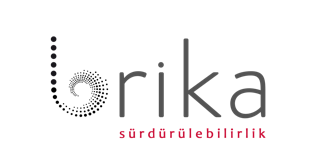How ‘Sustainable’ Are Turkey’s Ratings?
It has been almost a year since Turkey got an upgrade from a rating agency; but the last one-year has been also the most volatile period of the financial markets in Turkey since Lehman crisis. Gezi protests, the last few months domestic political events as well as the FED’s tapering have exerted pressure on the financial markets, especially the TL. Turkey had to increase interest rates at an emergency meeting on January 28th during the latest of these volatility episodes.
Even though the markets are relatively calm since March 30th elections, almost everybody agrees that it is too early to call-off emerging market volatility due to looming FED tapering and also dismiss the risks related to Turkey’s domestic political scenery.
At such a juncture, rating decisions and rating reviews have once become something to watch out for. Fitch affirmed Turkey rating on April 4th while Moody’s is expected to give a similar decision (On April 11th, Moody’s affirmed Turkey’s Baaa3 rating at its current level while changing the outlook from stable to negative).
In below exercise, rather than the usual practice of comparing Turkey’s macroeconomic indicators with the sovereign ratings, we have looked at the ratings from a sustainable development indicator perspective.
Why Are They Important?
Sustainable development indicators such as health, education, inequality, and governance measure socio-economic development rather than the material wealth indicators, like the GDP. The gap between a countries material wealth and socio-economic indicators implies redirecting of resources to human development for policy makers; but it also implies how sustainable a country’s high-growth episodes can possibly be if they are not backed up by improvement in human development. By including sustainable development indicators into the macroeconomic comparative data set, we hope to get a snapshot of the set of institutions, policies and factors that will increase the productivity of the economy and hence the growth rate in the longer-term.
For the exercise we use the below indices for Mexico, Turkey, Russia and South Korea.
- UNDP’s Human Development Index (HDI) composes of health, education and income indicators, aiming to measure development on a country basis. We look at the non-income component of the HDI
- Income index (gross national income per capita), which is the sub-index of HDI
- World Bank’s worldwide governance indicator, which is composed of sub-indices such as control of corruption, political stability, government effectiveness, regulatory quality, rule of law and voice& accountability
- Sovereign ratings by Fitch are indexed as AAA+=100
Below are the non-income HDI, income index of HDI and governance indicators graphed for four countries:
The below four graphs show each country’s rating index plotted against HDI, income and governance indicators. Here is what we see:
- Turkey has the lowest HDI scores as well as the rating scores while South Korea has the highest in both
- Income index and governance indicators do not explain why Turkey has the worst rating amongst the four
- Turkey’s sovereign ranking is more highly correlated to non-income HDI compared to income index
- The reverse is true for Russia and Mexico
- South Korea’s rating is highly and equally correlated to income and non-income HDI
- Overall, governance indicators are lower correlated to sovereign rating index in all of the four countries while HDI and income index explain it better
Looking at Turkey’s specific case, period between 2005-2008 both the income and the HDI were justifying a rate hike, which was not assigned until the end of 2009. While South Korea’s rate hike in 2012 looks well reserved both in terms income index and HDI, Mexico’s and Turkey’s rate hikes in 2013 are yet to be justified with an improvement in 2013 HDI and income indices (not announced yet). Until then, let us hope that there are no policy slippages in Turkey that will cause a rating change in conventional rating methodology.
* This article was also published in LongViewTurkey.com on April 10th, 2014





